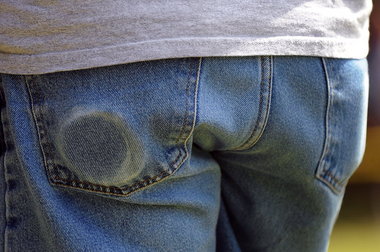Chewing tobacco; a habit more prevalent among high school students than some may assume. Chew, dip, snuff, lipper, or chaw, no matter what you call it, it still has the power to cause cancer and gum disease.
Nicotine addiction is an ever increasing problem on this campus, whether we want to believe it or not, students look past the inevitable health problems of tobacco and choose to do it anyway.
Most of Placer’s students realize the effects of tobacco usage, but how far will a student go until they realize that their decisions are slowly digging their own grave?
Due to the underage use of tobacco on this campus, students have requested to be quoted anonymously.
“It’s not appealing anymore, it’s just a habit,” stated an anonymous senior about his addiction to chewing tobacco.
Is it just ignorance or just plain old misinformation? This question sparked because students seem to have very little concern for the detriment that they are willingly causing to their bodies.
When asked about the awareness of possible health risks that come with tobacco, he smugly responded, “Yes, but I don’t care, it’s worth the risk.”
The Youth Risk Behavior Survey concluded that 12.8% of high schools boys use chewing tobacco on a regular basis.
The percentage of tobacco users on Placer’s campus may be a bit higher than what the statistics say. Whether the poison of your choice is cigarettes or chew, there’s a large amount of students who delve into their addiction before school, during passing periods, at lunch time, and after school.
The stench of cancer sticks suffocates the girls’ bathroom next to the locker room. For example, empty Copenhagen cans and spit cups lay deserted in the lower parking lot, and students waltz into class with a suspiciously fat lip.
If a student reeks of cigarette smoke after lunch or the stench of a fresh dip being placed ever so carefully into the rotting gums of a careless student doesn’t strike your attention, why should teachers let this slide?
It is clear that some suffer from a serious nicotine addiction and others smoke cigarettes as a stress reliever.
“I started a year ago, someone offered me a chew and it got me hooked,” said an anonymous senior boy.
Whether it may be a socially pressured choice, a habit you grew up with, or just something you had the urge to try, chewing tobacco has become a trend among Placer students.
“Adults and kids I know probably around 50+ people that chew,” junior Jennifer Fisk said.
In a community where chewing tobacco has been around since before the Gold Rush, the opinion of whether dip is bothersome or not to people can depend on whether its been a norm in their lives or not.
“I don’t think it’s gross, I grew up around it,” junior Laila Vincent said.
Although dip may not be an issue to some, it’s still an increasing issue in our school and has long term effects than can and will harm students’ well-being.
Smokeless tobacco is loaded with cancer causing agents known as carcinogens, and there are at least 28 different kinds of cancer causing chemicals in chew. Ingredients used to make fiber glass, rat poison, car batteries, lead, nuclear weapons, and embalming fluid can be found in your Copenhagen and Skoal cans.
The most common chemicals found in chew are known as nitrosamines, which are formed during the aging process of the tobacco.
The National Cancer Institute has found studies that directly connect nitrosamines to tobacco related cancers such as oral cancer, esophageal cancer, and pancreatic cancer.
Oral lesions in the mouth can occur from extended use of chew, precancerous white patches form on the inside of the cheeks and lips, infamously known as leukoplakia.
Due to the fact that moist snuff is inserted directly into the mouth, chemicals are collected in the blood stream and nicotine is absorbed and spreads throughout the body even after the chew is taken out. Nicotine remains in the blood stream longer with chewing tobacco because of the potency of the product, the cut of the tobacco, and the pH level according the to the National Cancer Institute.
For example, if one spent $3 for a can of chew, one can go through 3 cans a week, and in result lead one to spending over $1,000 a year. It burns a hole in one’s pocket, especially a typical high school student’s budget
While the feeling of a pinch between your cheek and gum may be satisfying for the moment, in the long run you will pay for your actions.
“It bugs me because it’s not something to be proud of,” admitted an anonymous senior boy.
As high schools students, we need to realize that we are not invincible to diseases, with the decision to chew also comes the consequences along with it.
Your teeth are turning yellow, your gums are deteriorating and becoming weak, and your mouth is becoming more susceptible to gingivitis and periodontal disease.
Not only is the tobacco killing your body, but it can kill your relationships as well. Do you think your nasty breath and yellow teeth are a turn on to girls or guys? Do your parents know that you chew? If they don’t, what would they do to you if they found out?
Having a hairy tongue, peeling white patches of skin off of the inside of your cheek, watching your teeth fade to yellow and eventually falling out is not a healthy life.
Chewing tobacco may be a hard habit to kick, but the effects of quitting will benefit you more than any high ever could.


